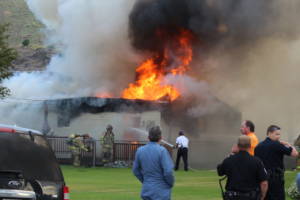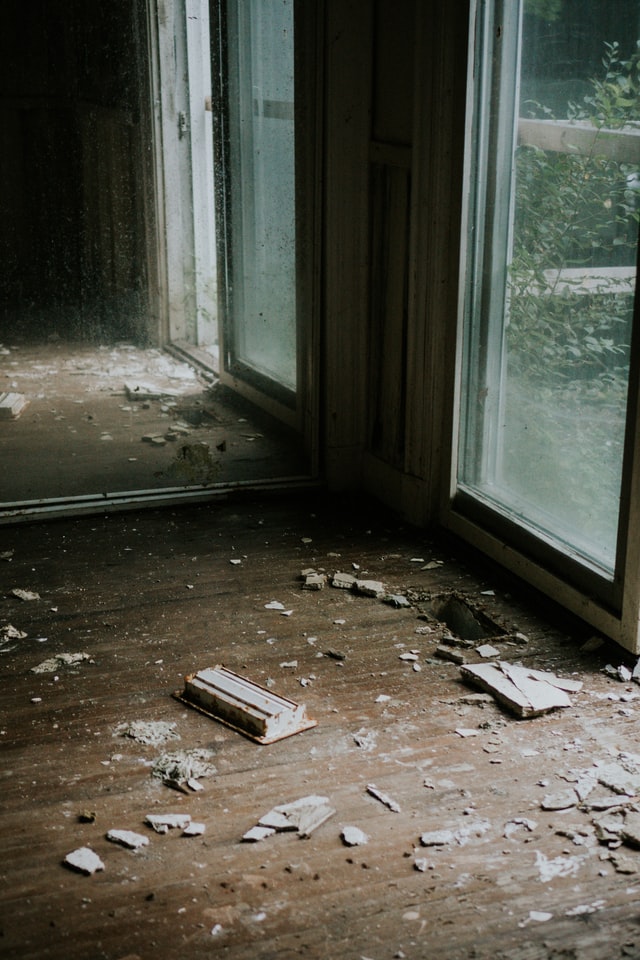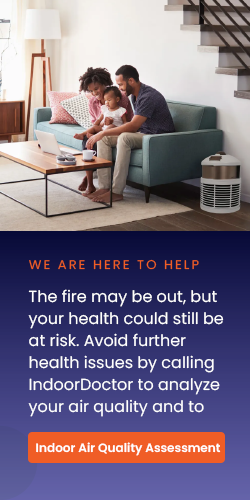Fire and smoke air quality testing is essential in the aftermath of a fire event. Fire and smoke damage leaves complex particulates and chemical residues that can have a significant effect on health and often leave a lingering smoky odor.
Significance
Hundreds of reaction products are created during and after a fire. Modern furnishings, building materials, and insulation material contain toxic properties. These cancer-causing chemicals become airborne during a fire and bind with the smoke properties. The soot, char, and ash that make up the particulate portion of these products are the most noticeable. They are responsible for the visual staining so characteristic of fire. However, there are hundreds of chemical compounds released as well. Some dissipate quickly and are not a long-term contamination concern; other chemicals can linger for weeks, months, or even years, causing concern about chronic effects and uncertainty regarding the efficacy of the cleanup or remediation process.
Our clients call us because they are currently experiencing adverse health effects or are concerned that they will in the future based on the fire and smoke damage.
Airborne Particulate Matter (PM) and Your Health
Problem
Smoky odors can degrade your air quality for months or even years after the fire and smoke event. Understanding the effect of the VOCs from fire and smoke can provide a comprehensive evaluation of the level of remaining fire and smoke contamination, especially in situations where all visible traces of the fire and smoke are gone but the odors remain.
Solution: IndoorDoctor Can Help.
The IndoorDoctor Fire and Smoke Check includes the testing of toxic chemicals generated by fire and smoke damage, lung damaging soot, fiberglass and other ultrafine particulates. We also use a laser particle scanner to instantly measure the lung damaging debris real time (see graph below). We can measure the effectiveness of your fire damage remediation strategy by providing initial, interim and final testing.

How We Can Help With Your Winter Storm Damage Concerns
The Fire Panel
Our testing process identifies signature chemicals associated from fire damage. The chemical compounds are separated into primary and secondary indicators based on their ability to meet the three essential criteria of universality, volatility, and detectability.
Primary
The primary indicators are those that best meet all the essential criteria.
• Cresols (o, m, p)
• Creosol
• Guaicol
• 4-Ethylguaicol
• Acenaphthylene
Secondary
Secondary indicators do not fully meet one or more of the essential criteria but can be used to support fire identification as well as other parameters such as fuel material or projected dissipation profile.
• Acrolein
• Acetonitrile
• Salicaldehyde
• 2-Furaldehyde
• 2,4-Dimethylphenol
• Biphenyl
• Naphthalene
• 2-Methylnaphthalene
IndoorDoctor will analyze the laboratory data and onsite diagnostics to provide you with actionable evidence to improve the healthiness of your home after fire and smoke damage.






